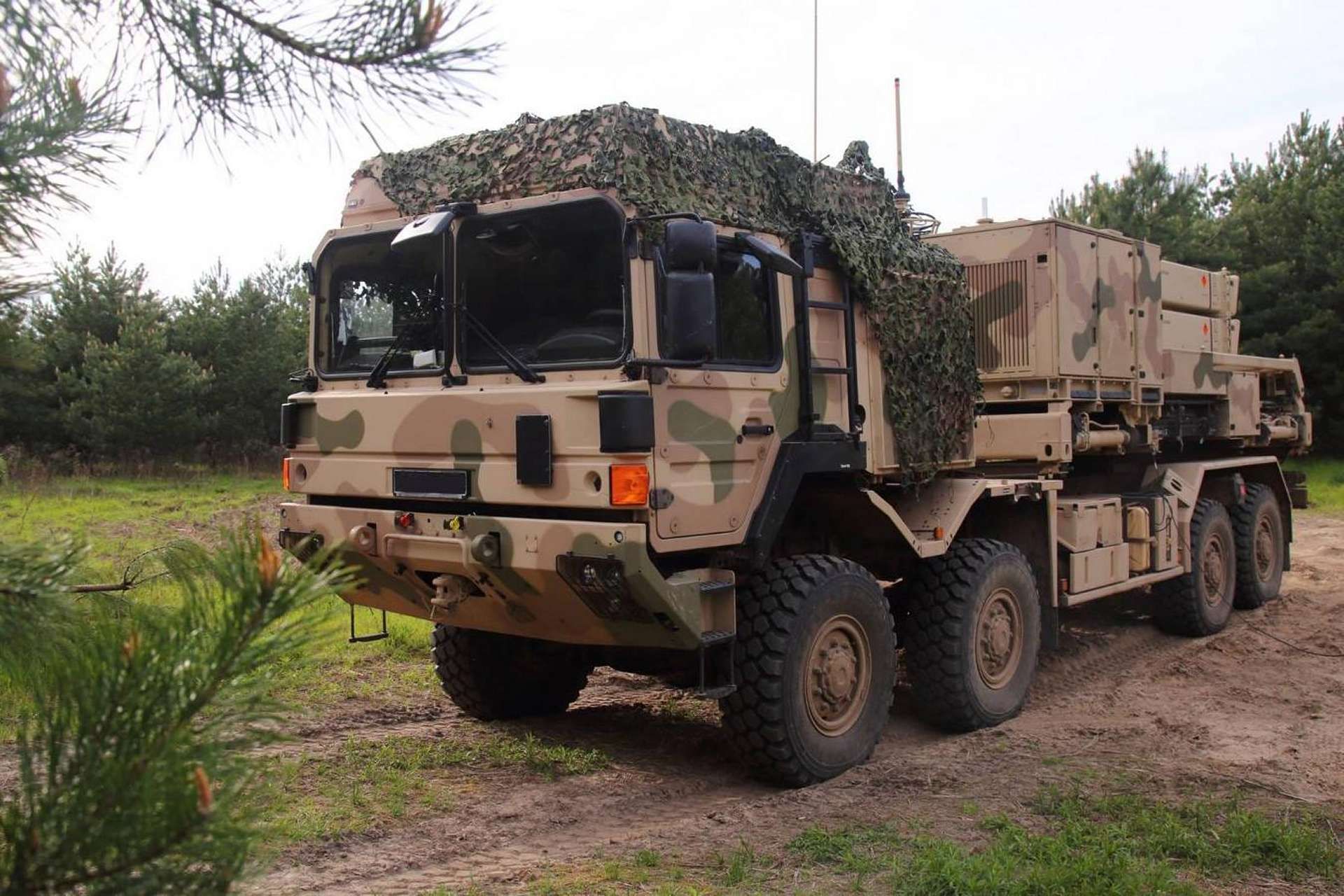Breaking news
Will German Navy equip F125 frigates with Iris-T SLM air defense systems?.
According to Hardpunkt on May 30, 2024, the German company Diehl Defence plans to integrate its Iris-T SLM surface-to-air missile not only into the widely-used vertical launch system Mk41 by Lockheed Martin but also onto the "Baden-Württemberg"-class frigates of the German Navy. These F125 frigates are currently considered under-armed, making them suitable candidates for this integration.
Follow Army Recognition on Google News at this link

According to internal sources, Diehl Defence envisions the Iris-T SLM as a viable option for these frigates, as this medium-range air defense missile features a maximum range of 40 km and can engage targets at altitudes up to 20 km. (Picture source: German MoD and Diehl Defence)
Presently, the primary armament of the F125 frigates includes a 127mm Oto Melara main gun, limited in its effectiveness against aerial targets, two 27mm Mauser MLG 27 fully automatic naval guns, and eight 12.7mm heavy machine guns. Additionally, the ships feature the RIM-116 Rolling Airframe Missile (RAM) system for short-range air defense, housed in two 21-cell launchers. Non-lethal weapons, such as water cannons and searchlights, are also included for non-provocative deterrence and defense. However, these frigates lack air defense missiles like the Evolved Sea Sparrow Missile (ESSM) found on other frigates of similar size, which can counter high-speed, maneuvering anti-ship cruise missiles and low-velocity air threats such as helicopters and high-speed surface targets at ranges of up to 50 km. In comparison, the RAM has a much shorter range, typically around 10 km.
According to internal sources, Diehl Defence envisions the Iris-T SLM as a viable option for these frigates. The Iris-T SLM, a medium-range air defense missile already in service in Ukraine, features a maximum range of 40 km and can engage targets at altitudes up to 20 km. The missile's guidance system includes GPS-aided inertial navigation with a radar data link for mid-course guidance and an infrared seeker for terminal phase targeting, allowing it to engage a variety of aerial threats, including aircraft, helicopters, and cruise missiles. Furthermore, the Iris-T SLM has a small inner dead zone that overlaps with the existing weapon systems on the F125, providing performance comparable to the ESSM.
A potential challenge is the current use of the space in front of the RAM launcher on the foredeck, which has been repurposed as a sports room. Installing a Vertical Launch System (VLS) would require significant modifications to the ship's structure, which is considered challenging. Therefore, an alternative solution must be found. Diehl suggests using a launcher system similar to the one mounted on trucks for land-based applications. This system is horizontally positioned during transport and hydraulically erected to a vertical position for launching. Such an approach could be adapted for the F125, with the launcher remaining horizontal during non-combat situations and only being raised for "combat cruises" to ensure readiness.

The Iris-T SLM missile's guidance system includes GPS-aided inertial navigation with a radar data link for mid-course guidance and an infrared seeker for terminal phase targeting, allowing it to engage a variety of aerial threats, including aircraft, helicopters, and cruise missiles. (Picture source: Ukrainian MoD)
Up to two launchers, each with eight missile canisters, could be positioned on the ship's upper deck where containers are currently stored. According to Diehl, the brief heat generated during a missile launch would not significantly strain the deck. However, in the event of a hangfire, where a missile ignites but does not launch, a protective plate would be needed to safeguard the ship's structure. Such a plate is already used for the ship's Harpoon anti-ship missiles.
The integration of the Iris-T SLM on the F125 could be further facilitated by the ship's use of the TRS-4D radar from Hensoldt. This radar, known in its land variant as the TRML-4D, serves as the primary sensor for the Iris-T SLM air defense system, which is already operational in Ukraine and will soon be introduced into the Bundeswehr. Diehl's experts are well-versed in the sensor's performance parameters and its interaction with the missile. Although the fixed radar plates on the ship are smaller and less powerful than the rotating TRML-4D land radar, the close proximity of the missile and sensor on the ship compensates for this. On land, the radar and sensor can be up to 20 km apart, whereas on the ship, they are positioned directly next to each other, enhancing data accuracy. The fixed-panel radar also eliminates the time delay caused by rotation, further improving precision.
Integration into the ship's command and weapon control system (FüWes), supplied by Atlas Elektronik, would be minimal. Deep integration is unnecessary as the missile is guided to the target area by radar and then relies on its passive infrared seeker for terminal guidance. Although infrared seekers are rarely used on ship-launched missiles due to performance issues in fog and clouds, Diehl's extensive experience with the missile in various weather conditions during the conflict in Ukraine suggests that these effects are negligible.
The company has indicated that launching the Iris-T SLM from a ship in rough seas should not present any issues, as the missile is adapted from an air-to-air version capable of enduring significant physical stresses. However, they emphasize that the launchers, containers, and missiles need to be resilient against the corrosive nature of saltwater, and Diehl is currently assessing this requirement. Additionally, Diehl states that they are prepared to commence integration trials on the F125 frigate immediately if needed, as the production of launchers and missiles is already underway and the necessary hardware is available.


























